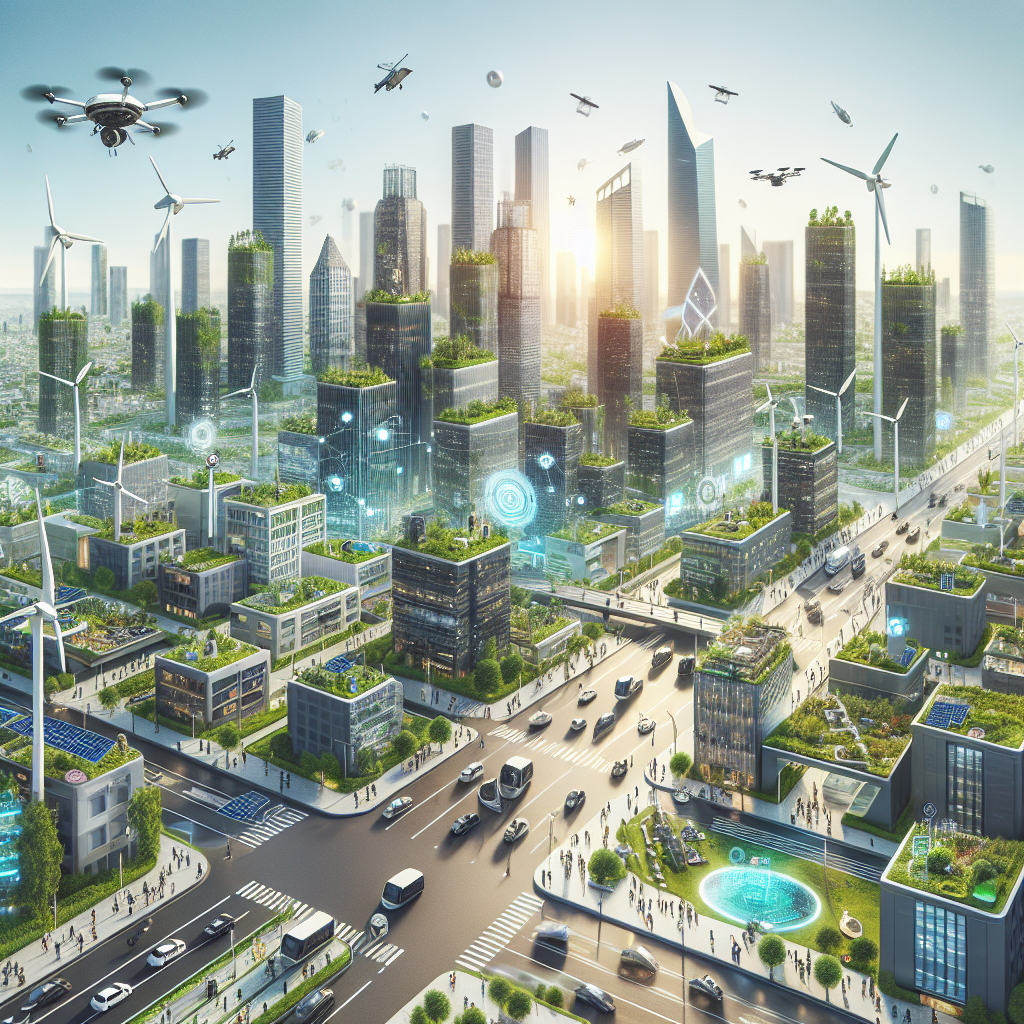In an era defined by rapid urbanization, with over half of the world’s population now residing in cities, the concept of "smart cities" has emerged as a beacon of hope for sustainable urban living. Smart cities leverage advanced technologies to improve the quality of life for their residents, drive economic growth, and promote environmental sustainability. This article delves into the various technologies that are reshaping urban environments, explore case studies, and address the challenges and opportunities presented by smart city initiatives.
What is a Smart City?
At its core, a smart city integrates information and communication technology (ICT) and Internet of Things (IoT) devices to manage urban assets. This encompasses numerous sectors including transport, energy, water supplies, waste management, and public safety. A smart city is not merely about adopting new technologies; it’s about creating a holistic, interconnected ecosystem where technology facilitates better governance, sustainability, and citizen engagement.
Technology Innovations and Their Impact
1. IoT and Data Analytics
IoT devices form the backbone of smart city infrastructure. Sensors and cameras placed throughout urban areas collect real-time data on traffic patterns, air quality, and energy consumption. This data can then be analyzed using AI algorithms to provide actionable insights. For instance, traffic management systems can adjust stoplight patterns based on real-time congestion data, reducing commute times and lowering emissions.
2. Smart Grids
Electric grids are being transformed into smart grids that can dynamically manage electricity supply and demand. Smart grids facilitate better energy distribution, reduce outages, and integrate renewable energy sources like solar and wind. Houses equipped with smart meters allow users to track their energy consumption in real-time, making it easier to shift usage to off-peak hours, further balancing the load on the grid.
3. Smart Waste Management
Innovations in waste management are another cornerstone of smart cities. IoT sensors can be placed in waste bins to measure fill levels, notifying city services when they need to be emptied. This optimization not only saves fuel costs but also reduces the carbon footprint of waste collection operations.
4. Sustainable Transport Solutions
Public transport systems are becoming more efficient and accessible through technology. GPS tracking allows citizens to see real-time bus arrival times, while mobile apps provide integrated transport options. Electric and autonomous vehicles are also being tested, promising to reduce traffic congestion and emissions.
5. Building Automation Systems
Commercial and residential buildings are being outfitted with smart technologies that regulate heating, ventilation, and air conditioning (HVAC) systems for energy efficiency. These systems can automatically adjust based on occupancy and weather, ensuring that energy is not wasted.
Case Studies: Successful Implementations
1. Barcelona, Spain
Barcelona is often cited as a leading example of a smart city. The city has implemented various IoT solutions, including smart streetlights that adjust brightness based on pedestrian presence and smart parking systems that inform drivers of available spots. Furthermore, Barcelona utilizes a comprehensive data strategy that consolidates information from diverse sources, streamlining decision-making processes.
2. Singapore
Singapore’s Smart Nation initiative aims to harness technology to improve the urban environment continually. With projects ranging from extensive sensor networks that monitor air quality to a nationwide cashless payment system, Singapore exemplifies how strategic investments in technology can lead to sustainable urban development.
3. Amsterdam, Netherlands
Amsterdam has made strides towards becoming a smart city by focusing on energy efficiency and sustainable mobility. Initiatives like the Smart City program encourage residents to engage with sustainability goals through apps and platforms that track energy consumption and suggest improvements. Amsterdam also promotes electric vehicle usage through widespread charging infrastructure.
Challenges in Smart City Development
While the promise of smart cities is enticing, several challenges can impede progression:
1. Data Privacy and Security
As smart cities rely heavily on data collection, concerns about privacy and cybersecurity are paramount. The more data collected, the greater the risk of breaches. Balancing the benefits of data use with the rights of citizens to privacy is a critical challenge.
2. High Implementation Costs
The initial investment required to develop the technological infrastructure for smart cities can be daunting for many municipalities. Budget constraints can lead to incomplete or inadequately integrated systems, undermining their potential benefits.
3. Interoperability Challenges
With different agencies and organizations working on various smart city initiatives, ensuring that systems can communicate and operate together is crucial. Lack of interoperability can result in fragmented services, limiting the effectiveness of the solutions.
4. Citizen Engagement
Lastly, the success of smart city technologies hinges on citizen engagement. If residents feel excluded from the process, the initiatives may fail to gain traction. It’s vital for cities to foster inclusion and ensure that technology meets the needs of all community members.
Future of Smart Cities
Looking forward, the future of smart cities is set to evolve with advancements in artificial intelligence, machine learning, and 5G connectivity. These technologies will enable unprecedented levels of data processing and real-time communication, driving further improvements in urban management. Additionally, greater emphasis on citizen participation and feedback will help shape initiatives that align with residents’ desires and needs, fostering a true sense of community and shared responsibility.
Conclusion
Smart cities represent a compelling vision for addressing the challenges of urbanization and sustainability. By integrating technology into urban frameworks, cities can optimize services, reduce resource consumption, and ultimately improve the quality of life for residents. However, the journey toward becoming a smart city is fraught with challenges that must be navigated carefully. As technology continues to evolve, so too will the strategies employed by urban centers worldwide to create sustainable, livable, and resilient environments.
FAQs
Q1: What technologies are essential for developing a smart city?
A1: Essential technologies include IoT devices, data analytics, smart grids, building automation systems, and intelligent transportation systems.
Q2: How do smart cities benefit the environment?
A2: They reduce energy consumption, decrease greenhouse gas emissions, optimize waste management, and promote sustainable transport options.
Q3: Are smart city technologies expensive to implement?
A3: Yes, the initial costs can be high, but the long-term operational savings and benefits often justify the investment.
Q4: How do smart cities engage citizens?
A4: Smart cities engage citizens through public forums, apps, and platforms that collect feedback and allow residents to participate in decision-making.
Q5: What are the privacy concerns regarding smart cities?
A5: The collection of vast amounts of data raises concerns about how that data is stored, shared, and used, leading to potential breaches of privacy.


